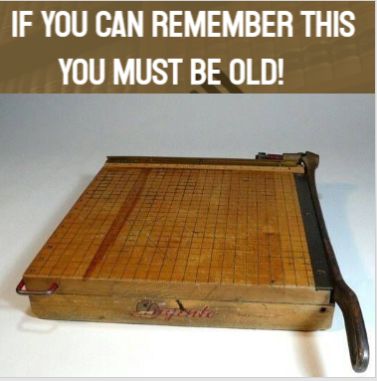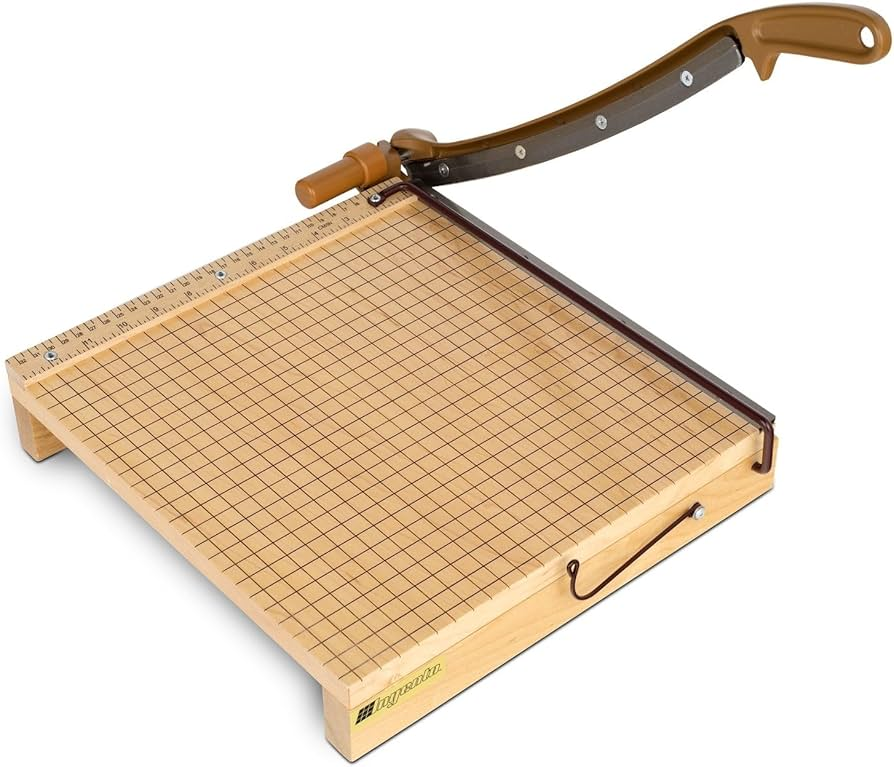Some tools are more than just objects—they carry memories, nostalgia, and a deep connection to the past. If you remember using a paper cutter, also known as a paper guillotine or finger cutter, you’re likely from an era when classrooms, offices, and print shops relied on manual precision over digital convenience.
This once-essential tool was a staple for schools, businesses, and creative spaces, but as technology has evolved, it has slowly faded into obscurity. However, its history, impact, and usefulness still hold a special place in the hearts of those who once relied on it.
Let’s take a journey through the origins, purpose, and evolution of the paper cutter—and why it remains a symbol of a truly iconic era.

The Origins of the Paper Cutter
Before the age of laser printers and digital cutting machines, people needed a reliable and precise way to cut large stacks of paper evenly. That’s where the paper guillotine came in.
✔ Early Invention (1837) – The first recorded paper cutter was invented by Guillaume Massiquot, a Frenchman who designed a guillotine-style paper trimmer with a sharp blade and lever mechanism.
✔ Industrial Revolution Expansion – As businesses and schools grew, so did the need for bulk paper cutting, leading to widespread use in printing presses, bookbinding shops, and government offices.
✔ School & Office Staple (Mid-20th Century) – By the 1950s and 60s, nearly every school, office, and library had a large wooden or metal paper cutter for trimming worksheets, posters, and documents.
The paper cutter became a trusted tool for precision and efficiency, making it a must-have for professionals and students alike.
How Did the Paper Cutter Work?
If you’ve ever used a traditional paper guillotine, you’ll likely remember the satisfying “swoosh” sound it made when slicing through a stack of papers.
Here’s how it worked:
1️⃣ Position the paper – Align the sheets along the built-in measurement grid for accuracy.
2️⃣ Hold the safety guard – Keep fingers away from the blade while securing the paper in place.
3️⃣ Lower the sharp blade – Using a lever-style handle, press down to slice the paper with a single swift motion.
For many, the paper cutter was both a tool and a childhood memory—one that came with the thrill of watching a perfect cut while also fearing the possibility of an accidental finger mishap!
Why the Paper Cutter Was a Must-Have Tool
Before digital printing technology took over, paper cutters were essential for various industries and everyday tasks.
🔹 Schools & Teachers – Used for cutting bulletin board materials, worksheets, and classroom decorations.
🔹 Offices & Businesses – Ideal for trimming documents, making reports, and resizing brochures.
🔹 Graphic Designers & Artists – Provided precise cutting for posters, presentations, and handcrafted projects.
🔹 Printing & Publishing – Ensured perfectly trimmed book pages and magazine prints before final production.
Unlike today’s automated cutting tools, paper guillotines required manual precision, skill, and patience, making them an art form in themselves.

The Infamous “Finger Cutter” Nickname
For those who grew up using a traditional paper cutter, the term “finger cutter” wasn’t just a joke—it was a genuine warning!
Many old-school paper cutters had extremely sharp blades with minimal safety features, meaning:
🚨 Accidental nicks and cuts were common.
🚨 Students were warned to be extra careful.
🚨 Some schools even banned their use for younger children!
The fear of getting a finger too close to the blade was real, but for many, it added to the nostalgia and respect for the tool’s power.
The Decline of the Paper Cutter: What Happened?
With the rise of modern technology, the classic paper guillotine began to disappear. Here’s why:
🖨 Digital Printing Revolution – High-speed laser printers and digital paper trimmers replaced the need for manual cutting.
🔄 Pre-Cut Paper Sizes – Businesses and schools now purchase pre-trimmed paper, eliminating the need for in-house cutting.
⚠ Safety Concerns – Many schools phased out traditional paper cutters in favor of safer, enclosed rotary trimmers.
💻 Paperless Movement – As digital files replaced printed documents, the demand for paper cutters declined significantly.
What was once a symbol of efficiency and precision has now become a rare sight in offices and classrooms, with many younger generations never having used one at all.

The Nostalgic Revival of Vintage Paper Cutters
Despite their decline in mainstream use, vintage paper cutters are making a comeback—not as office tools, but as collectible items and retro decor.
✨ Antique enthusiasts appreciate their solid wood and cast iron craftsmanship.
🎨 Artists and crafters use them for handmade projects and scrapbooking.
🛠 DIY restorers refurbish old paper cutters as decor pieces for home offices and creative spaces.
In a world dominated by digital technology, there’s something satisfying about using a classic, hand-operated tool that delivers perfect precision.
Final Thoughts: A Tool That Defined an Era
The paper cutter, paper guillotine, or “finger cutter” was more than just a piece of office equipment—it was a symbol of precision, craftsmanship, and practicality.
For those who remember using one, it brings back memories of school projects, office work, and the thrill of making the perfect cut.
Though it may have been replaced by modern technology, its legacy lives on in the memories of those who grew up in an era where paper was king, and a single blade could make all the difference.